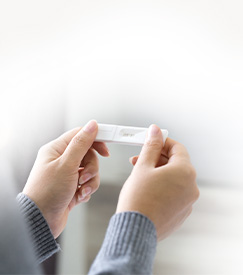 In the 21st century its far more common for a child to know that they are adopted from an early age than the secretive scenarios you may have heard about from the past. Understanding where we come from is an inherent need in all of us, and for an adopted child, understanding their beginnings can often be essential for their development and growth.
In the 21st century its far more common for a child to know that they are adopted from an early age than the secretive scenarios you may have heard about from the past. Understanding where we come from is an inherent need in all of us, and for an adopted child, understanding their beginnings can often be essential for their development and growth.
In this article well be exploring how children process adoption at different age markers, and how best to discuss adoption in regards to each age group.
The Early Years (Children aged 1-5)
The early years represents a key stage in a childs development as they are beginning to explore and discover the world they live in. This can create some challenges, however, particularly if the child doesnt look like their family, typically because theyre a different race. They can start to feel confused or outcast. Its important that the childs ethnic background is incorporated into parenting. This could be by visiting an exhibit with artifacts from their country of birth or cooking a traditional food item with them. This creates an environment where the child’s differences feel included and celebrated.
Children of this age usually are positive about the adoption experience, often because they remember very little of the process, or the hardships they may have faced before. Its important to encourage this positive perception of adoption. This can be achieved through conversation, books, toys, or learning activities.
In the Middle (Children aged 6-12)
It is around eight that an adopted child begins to learn more thoroughly and deeply what adoption means. They will start to understand that for them to be here with you, they had to be relinquished by the birth mother, or birth family.
This can cause feelings of intense grief, and your child might often become upset over this period. This of course will be hard on the entire family, as no one wants to see a loved one suffer. Keep positive, though; if your child is coming to you for comfort, it means that they trust you when theyre at their most vulnerable.
If your child is part of an open adoption, now may be the time to begin to build bridges with the biological mother/family. Your child might find it cathartic to send a letter, allowing a chance to connect and ask questions to whom they might feel is missing in their life.
Teenagers (Children aged 13-18+)
The teenage years are all about discovering identity, learning who you are and who you want to be. This can be a very difficult time for adoptive children, as they attempt to assimilate identity from both their adoptive parents and their birth parents, who they might never have met or conversed with.
This time can also cause a return of grieving emotions, and may result in resentment towards the adoptive parent. Raging hormones and complex emotions may could them to feel as though they may have been better with their biological family. While this of course will be hurtful to hear, it’s simply the expression of emotions that may be too complex for the child to truly understand. Be patient, and most importantly be there. They may not want to talk, but knowing you are available should they need you can often be a comforting factor.
Final Thoughts
No matter the age of your child, the best thing you can do to help them process their adoption its to be there for them. Listen to their thoughts and feelings and work together to help them to navigate their emotions and experiences.






